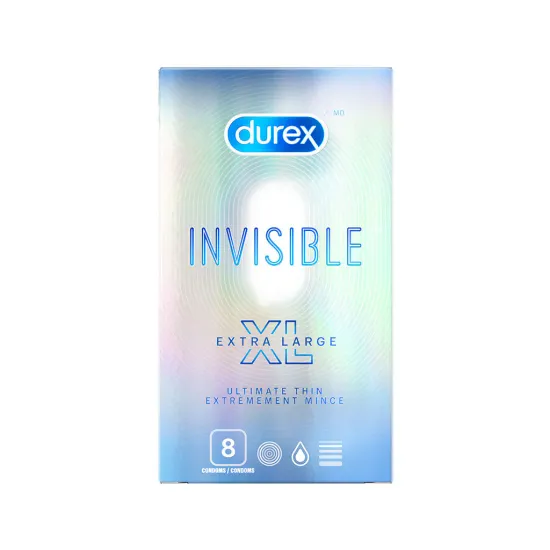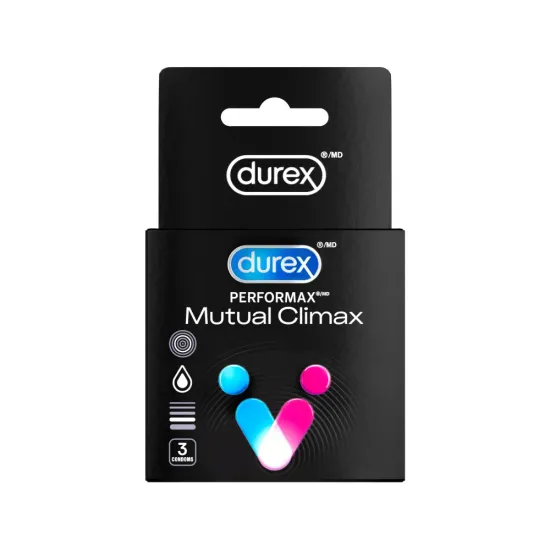
Do Condoms Prevent STDs?
Nothing feels better than knowing you’re protecting yourself and your partner from unwanted infections when you’re getting busy, and the proper use of condoms does lower that risk.
However, it’s important to point out that condoms are not 100% effective to prevent the risk of STDs and STIs – but there are tips you can follow that reduce the risk of sexually transmitted diseases.
Don’t worry, we’re not promoting abstinence here! Great sex is at the core of our culture, and we strive to provide you with the tools you need to have the best sex (worry-free!).
So let us break down what STDs and STIs are, and offer tips on how to get the most protection so you can continue enjoying sexual experiences seamlessly, enjoyably, and sensationally.
To get the most out of your protection, make sure to check out The Right Fit tool which details sizing, measurement, and how to choose the best fit condom to ensure pleasurable sex.
1 Can you get STDs with a condom?
You can still spread and contract an STD while wearing a condom – especially if there’s already an active infection, such as herpes, that’s prevalent on the body.
However, many people with an STI may be unaware they have one.
For asymptomatic or unrecognized cases, we still recommend getting tested regularly and after each new sexual partner at a sexual health clinic – particularly if you’re sexually active and don’t fall under the category of being in a long-term monogamous relationship.
2 What are the most common STDs?
STDs and STIs such as gonorrhea, chlamydia, hepatitis B, HIV, syphilis, and trichomoniasis can be transmitted through genital discharge, such as semen, and a right-sized condom can act as a barrier to help prevent the spread of these.
While the likelihood of STDs and STIs with condoms is lower, let’s understand what they specifically mean, so you know to choose protection & pleasure over risk & discontent.
3 What is gonorrhea?
Also known as “the clap”, gonorrhea is a venereal STD caused by Neisseria gonorrhea bacteria that can spread through unprotected vaginal, anal, or oral sex from someone who is infected.
Common symptoms include:
- Vaginal or penile discharge
- Burning sensations and pain when urinating
- Vaginal itchiness
- Bleeding between periods
- Lower abdominal pain or discomfort
- Swelling in the testicles or scrotum
Although gonorrhea is treatable with antibiotics prescribed from a doctor, it’s important to have protected vaginal, anal, or oral sex with the right-sized condom to avoid this from taking form in the first place.
Gonorrhea doesn’t just go away on its own and, if left untreated, can have serious consequences including pelvic inflammatory disease, infertility, and septic arthritis.
4 What is chlamydia?
Chlamydia is a bacterial STD caused by Chlamydia trachomatis, which is the most commonly reported STI in Canada. It mostly affects sexually active young adults, especially women within the age ranges of 15-24 years in Canada.
It often doesn’t cause many symptoms (and is regarded as the more ‘silent infection’) but, when it does, these are the most present examples:
- Vaginal or penile discharge
- Redness and swelling of genital areas
- Urination pain
- Painful ejaculation
Chlamydia is diagnosed through a urine sample or by swabbing the infected area and can be treated instantly with antibiotics.
If left untreated in women, ongoing chlamydia can lead to pelvic inflammatory disease (PID). For men, scarring of the urethra can make urination more difficult.
Again, it’s important to choose the best-sized condom when participating in vaginal, anal, or oral sex to prevent chlamydia, so as to significantly reduce the chances of getting STDs.
5 What is hepatitis B?
Hepatitis B is a liver infection that’s transmitted through contaminated bodily fluids such as semen and vaginal secretions, and through non-sexual sources like bodily fluids, sharing needles, a mother to child during birth.
There is both acute and chronic hepatitis B, which can cause symptoms such as:
- Mild or restless fatigue
- Jaundice
- Abdominal pain
- Joint pain
- Nausea
- Vomiting
- Enlarged liver
The best way to diagnose this infection is through a blood test with your doctor, as it will show whether or not it’s present and pinpoint the infected area.
Hepatitis B immune globulin is a vaccine that can prevent you from obtaining this infection, but there is no treatment for acute hepatitis B.
For chronic hepatitis B, an antiviral medication may be appropriate (taken by mouth). While these don’t cure hepatitis B, they help control the virus so it doesn’t further damage the liver.
In terms of STI infections, that come from contaminated semen and vaginal secretions, we again strongly recommend using condoms, as a right fit condom can help prevent STDs like hepatitis B.
6 What is HIV?
HIV stands for Human Immunodeficiency Virus which attacks the immune system and, if left untreated, can lead to AIDS (Acquired Immunodeficiency Syndrome). One of the main activities that can put people at risk for this disease is, as you may have guessed, having vaginal, anal, or oral sex without a condom.
HIV symptoms may begin to show within 2 to 4 weeks after infection, and can include:
- Fever
- Chills
- Rash
- Night sweats
- Muscle aches
- Sore throat
- Fatigue
- Swollen lymph nodes
- Mouth ulcers
Unfortunately, there’s no real cure for HIV and AIDS but you can always ask your doctor about PrEP medication – which helps prevent HIV from taking hold and spreading throughout your body (basically an extra step in reducing your chances of getting the disease).
On top of using condoms to prevent this STD, we recommend getting blood work done by your doctor if you’re frequently sexually active with more than one partner or are experiencing many of the symptoms listed above.
7 What is syphilis?
Syphilis is an STI that can evolve in stages and is contracted by coming in direct contact with sore(s) during vaginal, anal, or oral sex.
Can you get this STI even with a condom?
Sometimes, even if you wear a properly fitting condom, you can come in contact with the sore(s) if they’re surrounding an area not protected by the condom walls. Still, the chances of getting this STI with a condom are much lower than without one.
This STI is curable with the right antibiotics, and it’s best to regularly check in with your doctor if you’re sexual active (especially if you have multiple partners).
8 What is trichomoniasis?
Trichomoniasis is a pesky parasite-based STI that’s caused by an infection called Trichomonas vaginalis.
This STI is more common in women, and it commonly infects the lower genital tract (vulva, vagina, cervix, or urethra). Still, men can contract trichomoniasis as well – where it takes place inside the penis (urethra).
Those who have trichomoniasis may experience:
- Urination discomfort
- Discharge from the penis or unusual vaginal discharge
- Itching or irritation around the genitals
If left untreated, trichomoniasis can manifest into further genital inflammation. So, as we’ve reiterated throughout this article, make sure you’re well protected.
Though you can still get STDs and STIs while using a condom, it’s a substantially lower risk than having unprotected sex. All of the above diseases and infections can be greatly prevented by applying the right condom.
Now, let’s touch on some safe tips on how to get the most protection and pleasure from your condom.
But before we do that, let’s clear up 4 Myths About Condoms That Just Aren’t True so you can have better peace of mind before it strikes pleasure time.
9 How do I get the most protection from condoms?
While we now know that condoms help prevent STDs, let’s make sure you know how to properly get the best out of them.
Durex Natural latex condoms that come pre-lubricated* are always a smart choice to pick, but how can they remain protecting you?
Here are a few condom tips to ensure ultimate protection and pleasure satisfaction:
- Store them in a cool place, away from sunlight (such as a dresser drawer)
- Always check the expiration date on the condom wrapper or box
- Tear the condom wrapper open from the edge, and be careful with your fingernails or sharp objects as they might do damage
- When putting the condom on, make sure the tip end is pointing up like a little hat
- As you roll the rim down, it should be visible above the rest of the latex - not underneath
- Gently squeeze the tip of the condom with your fingers and place it on the head of the erect penis - then roll it right to the base
- Squeezing the tip creates a collector space for semen while squeezing out any extra air
- When finished sex, hold onto the rim of the condom and pull out the penis while still hard so semen doesn’t sneak out - then toss it in the trash
- Use a new condom every time you have sex – whatever type of sex you choose to have!
To further ensure you’re getting the most protection from your condom choice, use our Find Your Right Fit tool to choose your best fit condom depending on your size, as well as your lube and thinness preferences.
—
The question of, “Can you get an STD with a condom?” has been solved at last – and the answer remains yes, but the chances of getting one are significantly lower when choosing to have sex with a comfortable condom on.
If you’re curious about how to further prevent any unwanted things from happening, check out these Tips On How To Clean Sex Toys For Proper And Safe Reuse.
*Ensure this product is right for you. Always read and follow the label before use.

